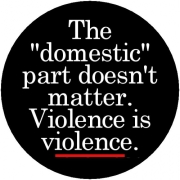 This week on Monday, May 6, missing person Amanda Berry escaped from the house she had been living in since she had been kidnapped 10 years prior – with the daughter she conceived through rape by her captor as DNA tests confirm. After escaping, she ran to a neighbors house and called 911 to be rescued. For over 10 years, Amanda Berry, Gina DeJesus and Michelle Knight all lived in this house with accused kidnapper and rapist, Ariel Castro. While captive, the women report multiple pregnancies, one live birth and also multiple miscarriages. At times, the women were bound with chains and ropes and locked in the basement. On May 8, Castro was charged with 4 counts of kidnapping and 3 counts of rape. In video tapes of vigils held for the young girls, the presence of Castro is noted. Not only did he attend the vigils for the girls, but he also participated in search parties and attempted to develop relationships with family members of the girls. Despite the contact Castro had with the families, and a $25,000 reward for information put out by the Police Department, these girls were kidnapped and living with Castro for 9-12 years.
This week on Monday, May 6, missing person Amanda Berry escaped from the house she had been living in since she had been kidnapped 10 years prior – with the daughter she conceived through rape by her captor as DNA tests confirm. After escaping, she ran to a neighbors house and called 911 to be rescued. For over 10 years, Amanda Berry, Gina DeJesus and Michelle Knight all lived in this house with accused kidnapper and rapist, Ariel Castro. While captive, the women report multiple pregnancies, one live birth and also multiple miscarriages. At times, the women were bound with chains and ropes and locked in the basement. On May 8, Castro was charged with 4 counts of kidnapping and 3 counts of rape. In video tapes of vigils held for the young girls, the presence of Castro is noted. Not only did he attend the vigils for the girls, but he also participated in search parties and attempted to develop relationships with family members of the girls. Despite the contact Castro had with the families, and a $25,000 reward for information put out by the Police Department, these girls were kidnapped and living with Castro for 9-12 years.
Here is some information about the survivors:
- Michelle Knight disappeared on August 22, 2002, after leaving a cousin’s house and was 21 years old at the time. On the day of her disappearance, she was scheduled to appear in court for a custody hearing over a son she had previously lost to the state, but she never showed up. According to officers who helped rescue Knight this week, she had accepted a ride home from Ariel Castro, but he took her to his house instead where he locked her up with chains inside the basement and repeatedly beaten. Because of the beatings that she routinely received, she has to now receive facial reconstruction surgery and she also lost hearing in one of her ears. The physical abuse that Castro used against her had to have been horrific for these physical symptoms to appear. She reportedly suffered the most abuse at the hands of Castro and told police that Castro had impregnated her at least five times, and had induced miscarriages each time through beatings and starvation
- Gina DeJesus went missing when she was just 14 years old. She was last seen at a pay phone at about 3 p.m. on
 April 2, 2004, on the way home from her middle school. DeJesus and her friend, Ariel Castro’s daughter Arlene, had called Castro’s ex-wife, Grimilda Figueroa, for permission to have a sleepover at DeJesus’ house, but Figueroa had said they could not, and the two girls parted ways. It is alleged that Castro offered DeJesus a ride to his home to see his daughter but instead took her captive. Because no one witnessed DeJesus’ abduction, an AMBER Alert was not issued, which angered her father. He said in 2006, “The Amber Alert should work for any missing child…Whether it’s an abduction or a runaway, a child needs to be found. We need to change this law.” The fact that DeJesus was victimized by her own friends’ father just goes to highlight the statistics that rapists are rarely ever men just hiding behind trees looking for opportunities. Feminist scholar Jessica Valenti highlights the fact that nearly 2/3 of all rapes are committed by someone the victim knows. DeJesus told law enforcement she was raped, but did not believe she was ever impregnated.
April 2, 2004, on the way home from her middle school. DeJesus and her friend, Ariel Castro’s daughter Arlene, had called Castro’s ex-wife, Grimilda Figueroa, for permission to have a sleepover at DeJesus’ house, but Figueroa had said they could not, and the two girls parted ways. It is alleged that Castro offered DeJesus a ride to his home to see his daughter but instead took her captive. Because no one witnessed DeJesus’ abduction, an AMBER Alert was not issued, which angered her father. He said in 2006, “The Amber Alert should work for any missing child…Whether it’s an abduction or a runaway, a child needs to be found. We need to change this law.” The fact that DeJesus was victimized by her own friends’ father just goes to highlight the statistics that rapists are rarely ever men just hiding behind trees looking for opportunities. Feminist scholar Jessica Valenti highlights the fact that nearly 2/3 of all rapes are committed by someone the victim knows. DeJesus told law enforcement she was raped, but did not believe she was ever impregnated. - Amanda Berry risked everything to get out of that house. She went missing on April 21, 2003, one day before her
 17th birthday. Berry has told police she accepted Castro’s offer of a ride home from work after he had told her that he had a son who also worked at Burger King. After Berry entered Castro’s vehicle, he allegedly drove straight to his own home and imprisoned her. The FBI initially considered Berry a runaway, until a week after her disappearance, when an unidentified male used Berry’s cell phone to call her mother, saying “I have Amanda. She’s fine and will be coming home in a couple of days.” Though as we know, she never did show up in the next few days. In the next few years, she was reportedly raped by Castro and became pregnant. She escaped with her 6-year old daughter. According to police interviews with the victims, Amanda Berry gave birth to a daughter on December 25, 2006 in the home where the women were imprisoned. The birth took place in a plastic inflatable pool, with Knight assisting Berry. Castro threatened death to Knight if anything happened to the baby.
17th birthday. Berry has told police she accepted Castro’s offer of a ride home from work after he had told her that he had a son who also worked at Burger King. After Berry entered Castro’s vehicle, he allegedly drove straight to his own home and imprisoned her. The FBI initially considered Berry a runaway, until a week after her disappearance, when an unidentified male used Berry’s cell phone to call her mother, saying “I have Amanda. She’s fine and will be coming home in a couple of days.” Though as we know, she never did show up in the next few days. In the next few years, she was reportedly raped by Castro and became pregnant. She escaped with her 6-year old daughter. According to police interviews with the victims, Amanda Berry gave birth to a daughter on December 25, 2006 in the home where the women were imprisoned. The birth took place in a plastic inflatable pool, with Knight assisting Berry. Castro threatened death to Knight if anything happened to the baby.
Unfortunately, it seems that there were some signs there. Castro has had contact with the law before and accused of the same crimes he has been charged with. He is known to be violent against women. He reportedly beat his wife, breaking her nose, ribs, and arms, and once threw her down a set of stairs, cracking her skull. After she finally moved out, he continued to threaten and attack her. His wife also accused him of repeatedly attempting to abduct his daughters from her, something he eventually did with his own daughters friend and two other random victims.
Thankfully, Amanda Berry, Gina DeJesus and Michelle Knight now have the opportunity to rebuild their lives after the horrible destruction brought to them by Castro and he will now have to face the horrible things he has done to all of these young girls. According to police sources, he has admitted to everything and said that he chose the girls at random, because the opportunities struck. He supposedly referred to himself as a monster and explained that he was a sex addict. As Valenti explains, the perpetrators of these horrendous crimes against women are almost always by someone the people know. Though he chose 2 of these girls at random, we do know that one of them was his daughter’s best friend.






















